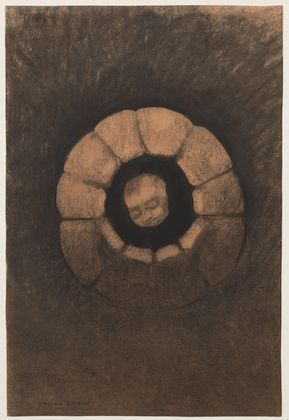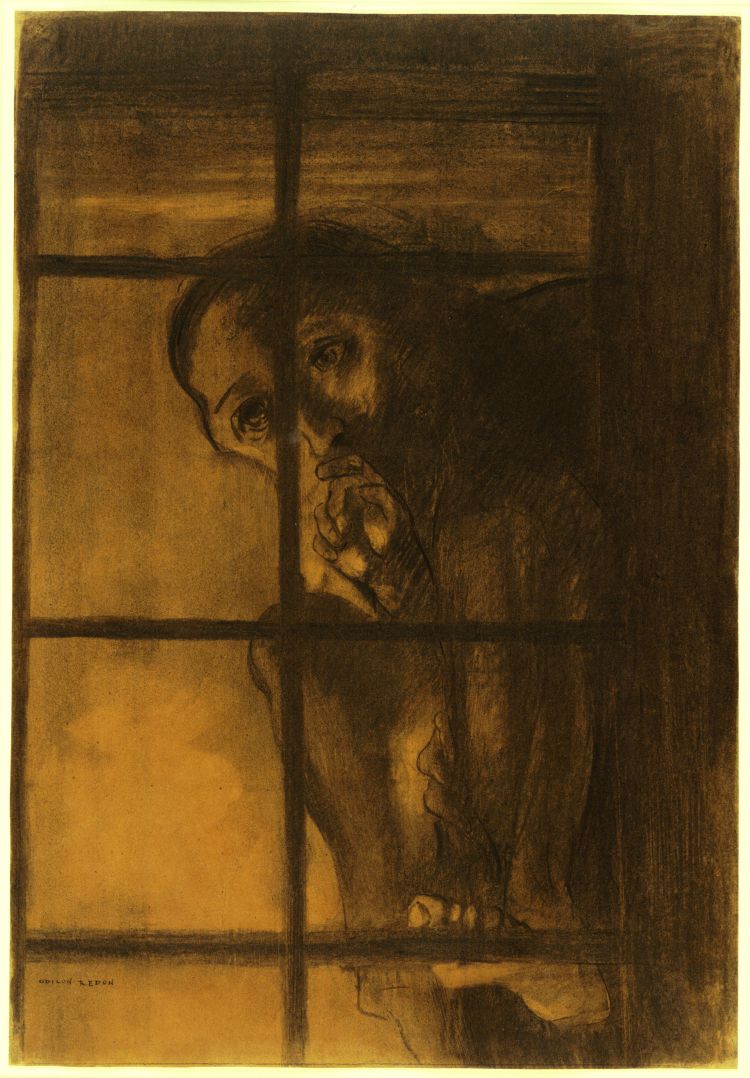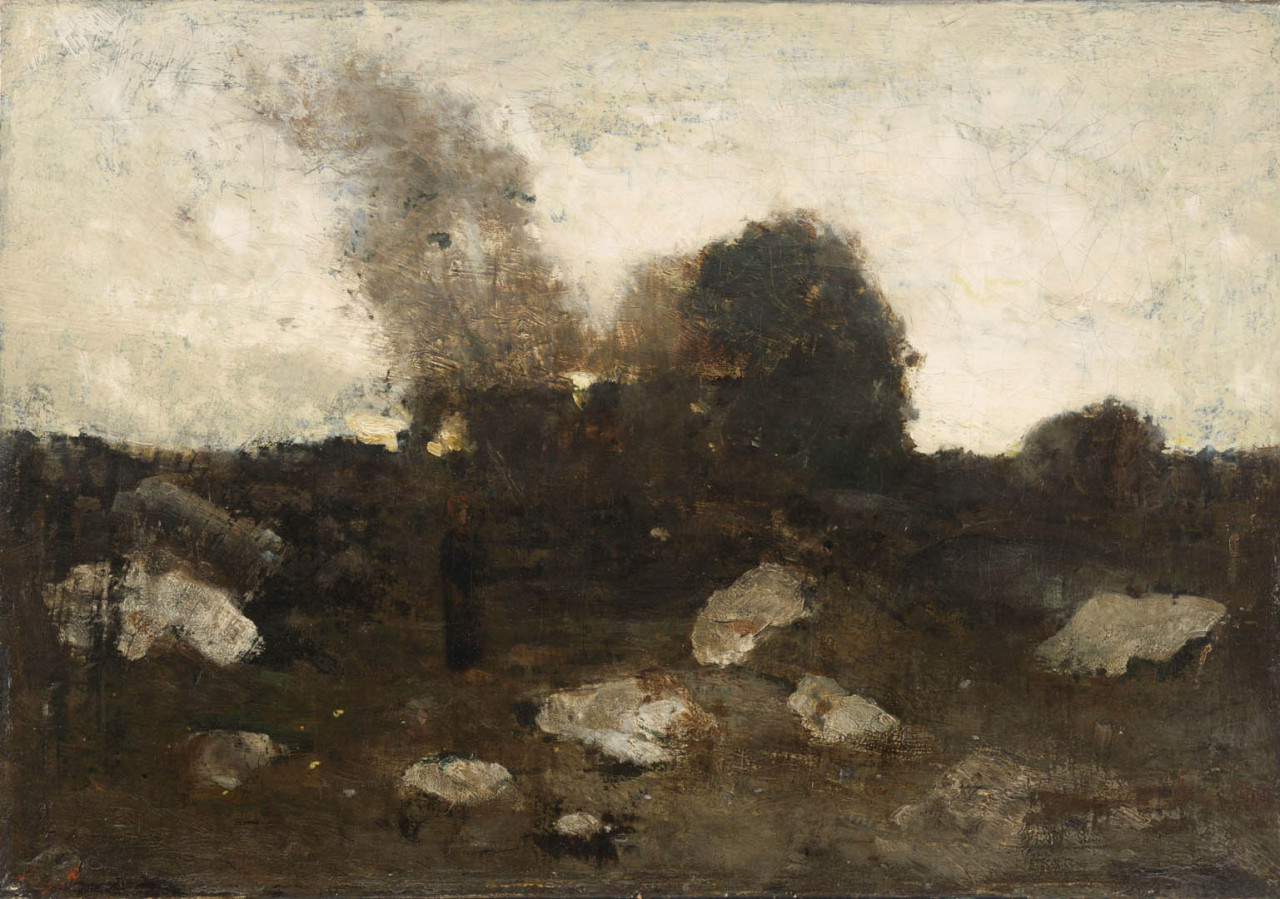Museum of Modern Art
October 30, 2005–January 23, 2006
http://www.moma.org/exhibitions/2005/odilon_redon.html
Caught between description and dream, the felt and the imagined, French artist Odilon Redon, whose career bridged the nineteenth and twentieth centuries, transformed the natural world into nightmarish visions and bizarre fantasies. Closely allied with the Symbolist movement, Redon offered his own interpretations of literary, biblical and mythological subjects; created a universe of strange hybrid creatures; and presented landscape in a singular way: we see grinning disembodied teeth, smiling spiders, melancholic floating faces, winged chariots, unfamiliar plant life, and velvety black or colored swirls of atmosphere. With a recent gift from the Ian Woodner family, The Museum of Modern Art is now the site of the most significant body of the artist's work outside France, and this book will showcase the full range of Redon's varied oeuvre--charcoal "noirs," luminous pastels, richly textured canvases, literary collaborations and experiments in printmaking--and will illuminate the hold his particular kind of Modernism has had on both twentieth-century and contemporary artists.
Catalogue

Beyond The Visible: The Art Of Odilon Redon
From a review: (images added)
Odilon Redon, "The Teeth"
French artist Odilon Redon’s (1840-1916) dark world of the fantastic, featuring figures that Gauguin referred to as "imaginary beings" and not "monsters," will be inhabiting MoMA for another month, offering holiday cheer to those seeking respite from shopping crowds everywhere. The bulk of this exciting retrospective of the Decadent Symbolist is his bizarre drawings, "noirs" that feature lonely figures amid bleak landscapes. A large severed head is carried on a platter in
"Descent into Hell."
In "Eye-Balloon,"
an enormous eyeball in the shape of a hot-air balloon floats through gray skies, its only passenger a head on a plate.
A child’s face looms in the shaft of a dark well in "The Well."
Look closely at the figure’s fingers and feet in "The Convict."
The minute hand in the ominous "The Masque of the Red Death" is a feather brushing away time.
Get up close to "The Teeth" (above) to see how Redon scraped the canvas to create the halo of light around the chattering dentoids.
It wasn’t until the turn of the century that Redon began brightening his works, using pastels, watercolors, and colored wove paper. He continued his techniques of wiping, stumping, incising, erasing, and smudging to create such abstract drawings as
"Roger and Angelica"
as well as the quasi-religious "The Window,"
and the garishly purple "Woman with Flower Corsage."
The earliest painting on view is
1872’s "Landscape at Daybreak,"
a postapocalyptic image of desolation.

In "The Black Sun,"
two faceless people walk through the desert, a sun with a gloomy face looking down from above.
"Green Death" spins out of a coiled snake.
The canvas itself becomes a character in "Underwater Vision."
The exhibition also features fabulous prints, many of which Redon did for illustrated books. Among our favorites are
"The Misshapen Polyp Floated on the Shores, a Sort of Smiling and Hideous Cyclops" from THE ORIGINS,
the six lithographs that comprise HOMAGE TO GOYA:
"Everywhere Eyeballs Are Ablaze" from the first of several series on THE TEMPTATION OF SAINT ANTHONY,
and the sideshow-esque "And He Had in His Right Hand Seven Stars: and Out of His Mouth Went a Sharp Two-edged Sword" from THE APOCALYPSE OF SAINT JOHN
as well as such cool one-offs as
"The Egg,"
"The Spider,"
"The Haunting,"
and "The Reader";
in the latter, the light seeping through the window forms a kind of spiderweb.
Dark but not disturbing, this welcome Redon tribute will bring out the Goth in you.
Nice article

















